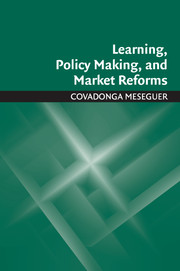3 - Learning and Development Strategies
Published online by Cambridge University Press: 18 January 2010
Summary
[M]any developing countries learned the hard way by following IS policies too long and seeing the fortunate few pursuing the EP strategy [export promotion] do much better. Perhaps learning by others doing and one's undoing is the most common form of education.
Jagdish Bhagwati (1985: 41)In this chapter, I explore the question of whether governments adopted an EO development strategy as a result of learning.
During the 1980s, a growing consensus emerged about the failure of ISI to promote growth. Poor economic performance in countries pursuing ISI contrasted with outstanding growth figures in the East Asian newly industrialized countries (NICs). In turn, the good performance of the East Asian NICs was associated with the adoption of a radically different strategy based on export promotion. Failure of ISI coupled with the success of EO triggered a process of learning in theory and practice. As a result, trade policy stances converged. This story is obviously sketchy. Yet, it is an accurate summary of a well-established argument: Governments adopted EO because they learned from experience (Haggard 1990; Iglesias 1992; Edwards 1995, chapter 3; Krueger 1997). I test this argument here.
The debate about development strategies had profound normative implications. Initially, the triumph of EO over ISI was interpreted as a triumph of markets over the state. Policy recommendations of less state involvement in development became the rule. However, a closer look at country stories and other empirical research showed that the reality was far more complicated.
- Type
- Chapter
- Information
- Learning, Policy Making, and Market Reforms , pp. 73 - 110Publisher: Cambridge University PressPrint publication year: 2009

